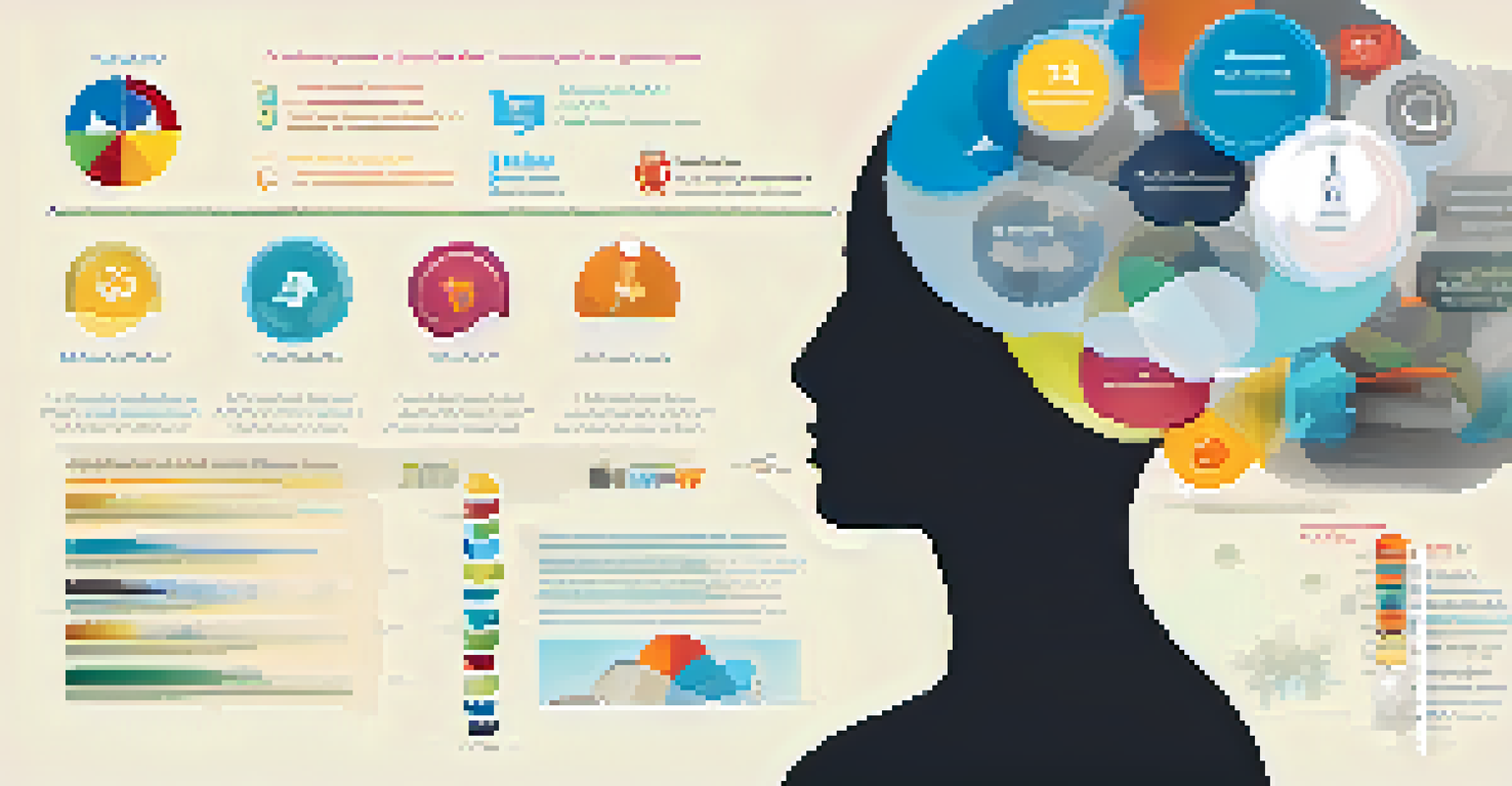Cognitive Load and Its Role in Learning Analytics

What is Cognitive Load and Why It Matters
Cognitive load refers to the amount of mental effort being used in the working memory. It plays a crucial role in how we process information, learn, and retain knowledge. Understanding cognitive load is essential for educators and instructional designers, as it directly impacts the effectiveness of learning experiences.
Cognitive load theory provides a framework for understanding how to present information in a way that optimizes learning.
There are three types of cognitive load: intrinsic, extraneous, and germane. Intrinsic load is the complexity of the material itself, while extraneous load is the unnecessary information that can hinder learning. Germane load, on the other hand, is the mental effort dedicated to processing and understanding the core material, which ultimately leads to better retention.
By managing cognitive load effectively, educators can create an optimal learning environment that promotes deeper understanding and retention of information. This management is particularly important in learning analytics, where data can be overwhelming if not presented clearly.
The Connection Between Cognitive Load and Learning Analytics
Learning analytics involves collecting and analyzing data about learners and their contexts to enhance learning experiences. Cognitive load plays a significant role in this field, as it influences how learners interact with the data presented to them. When learning analytics tools overwhelm users with excessive information, cognitive overload can occur, hindering effective decision-making.

For instance, if a dashboard presents too many metrics without clear context, learners may struggle to derive meaningful insights. This can lead to frustration and disengagement, ultimately affecting their performance. Therefore, understanding cognitive load helps in designing analytics tools that are user-friendly and supportive.
Understanding Cognitive Load Types
Cognitive load consists of intrinsic, extraneous, and germane types that impact how learners process and retain information.
By aligning learning analytics with cognitive load principles, educators can create tailored interventions that are not only data-driven but also cognizant of learners' mental capacities. This balance leads to more effective teaching strategies and improved learning outcomes.
Types of Cognitive Load in Learning Environments
In learning environments, cognitive load can be classified into the same three types mentioned earlier: intrinsic, extraneous, and germane. Intrinsic load is influenced by the difficulty of the subject matter and the learner's prior knowledge. For example, a student with a solid foundation in algebra will find advanced algebra concepts less taxing than someone starting from scratch.
The key to improving learning is to reduce extraneous cognitive load and promote germane cognitive load.
Extraneous load arises from poor instructional design or unnecessary information that distracts the learner. For example, a cluttered presentation filled with irrelevant images can divert attention away from the main concepts. Educators must minimize extraneous load to keep learners focused on what truly matters.
Germane load supports the construction of schemas and promotes deeper understanding. When learners are engaged in activities that encourage critical thinking and problem-solving, they are likely to experience germane load. This type of load is beneficial, as it fosters meaningful learning experiences.
Strategies to Manage Cognitive Load in Learning Analytics
Managing cognitive load in learning analytics starts with clear, concise data presentation. Visualizations such as graphs and charts can help simplify complex information, making it easier for learners to digest. Additionally, breaking down data into smaller, manageable chunks can help prevent cognitive overload.
Another effective strategy is to provide contextual information alongside data. For instance, adding explanations or examples can help learners understand the significance of the data they are examining. This contextualization supports germane load, as it encourages deeper engagement with the material.
Optimizing Learning Analytics Tools
Effective learning analytics should present data clearly to prevent cognitive overload and enhance learner engagement.
Finally, providing opportunities for active learning can enhance understanding while managing cognitive load. Encouraging learners to interact with the data through discussions or hands-on activities allows them to process information in a way that promotes retention and application.
The Role of Technology in Reducing Cognitive Load
Technology can be a powerful ally in managing cognitive load. Learning management systems (LMS) and educational apps often incorporate features designed to minimize extraneous load, such as intuitive navigation and personalized learning paths. These tools help learners focus on the content that matters most to them.
Moreover, adaptive learning technologies assess a learner's progress and adjust the content accordingly, ensuring that the intrinsic load remains manageable. For example, if a student struggles with a particular topic, the system can offer additional resources or simpler explanations before advancing.
However, it's crucial to strike a balance with technology. While it can enhance the learning experience, too much reliance on tech can lead to its own form of cognitive overload. Educators must carefully consider how technology complements traditional teaching methods to create a harmonious learning environment.
Assessing Cognitive Load Through Learning Analytics
Learning analytics can be used to assess cognitive load by analyzing engagement levels, time spent on tasks, and assessment outcomes. By monitoring these metrics, educators can identify when learners may be experiencing cognitive overload. For instance, if a high percentage of students are struggling with a specific module, it may indicate that the intrinsic load is too high.
Additionally, feedback mechanisms such as surveys and quizzes can provide insights into learners' perceptions of cognitive load. By asking students how they feel about the difficulty of the material, educators can gauge whether adjustments are necessary. This feedback loop is essential for continuous improvement in instructional design.
Tech's Role in Learning Efficiency
Technology can reduce cognitive load through personalized learning paths and adaptive content, but balance is essential to avoid overload.
Ultimately, using learning analytics to assess cognitive load allows educators to make informed decisions about curriculum adjustments and teaching strategies. This data-driven approach ensures that learning experiences are tailored to the needs of learners, leading to better outcomes.
Future Trends in Cognitive Load and Learning Analytics
As technology continues to evolve, the future of cognitive load in learning analytics looks promising. Emerging trends such as artificial intelligence (AI) and machine learning are poised to revolutionize how we understand and manage cognitive load. These technologies can analyze vast amounts of data to provide personalized learning experiences tailored to individual needs.
Moreover, advancements in neuroeducation—an interdisciplinary field combining neuroscience and education—are shedding light on how cognitive load affects learning at a biological level. This research can lead to innovative instructional strategies that align with how our brains naturally process information.

As we move forward, it's essential for educators and technologists to collaborate and prioritize cognitive load management in learning analytics. By staying ahead of these trends, we can create learning environments that not only captivate learners but also support their cognitive capacities.